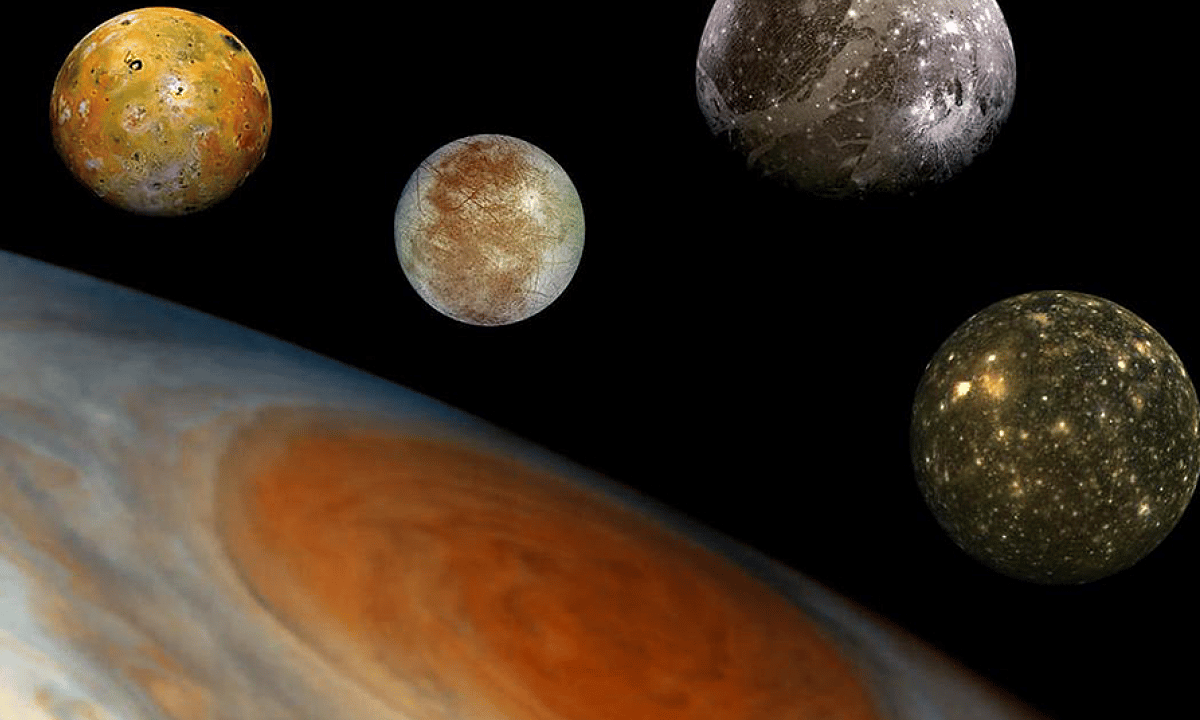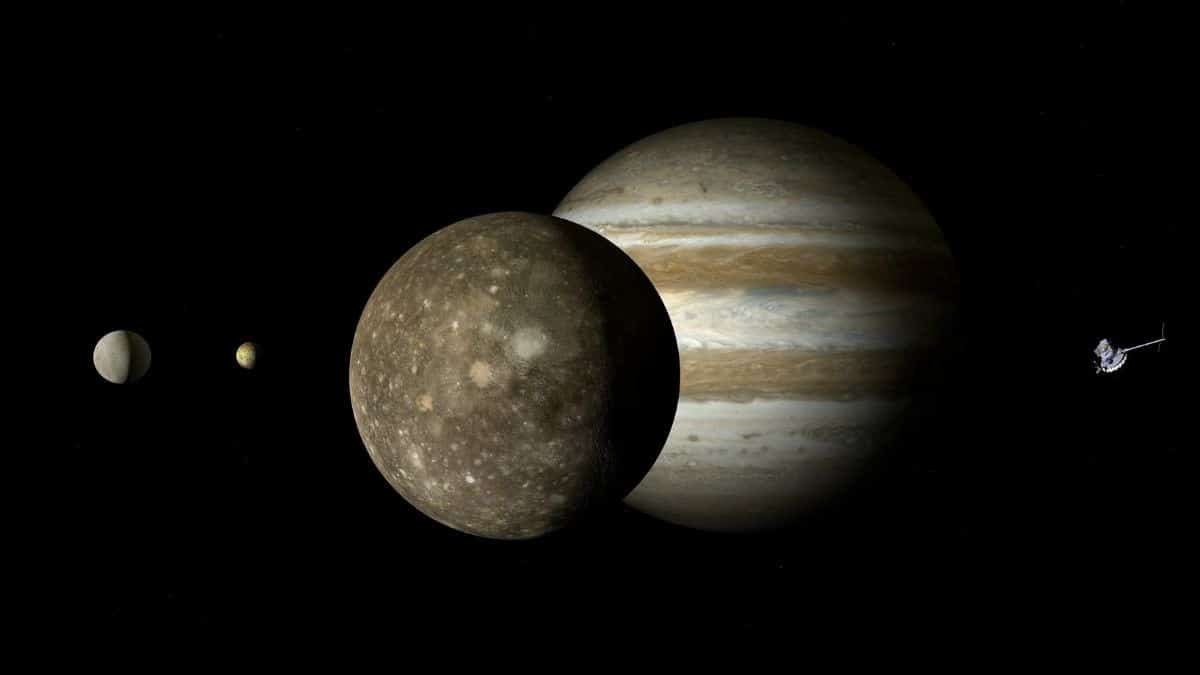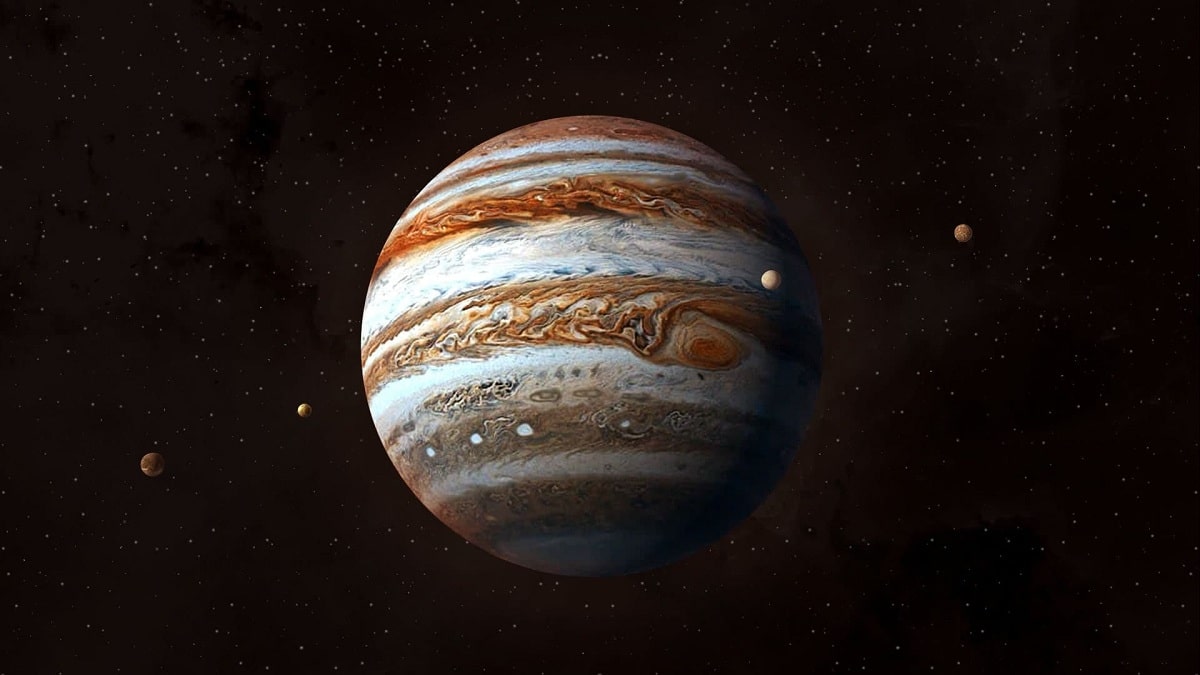
Jupiter is the largest planet in the entire solar system and belongs to the group of gas planets. It is a large planet that has so far discovered a large number of moons. However, many people wonder how many moons does jupiter have. It has a large number of them and its formation is quite striking.
For this reason, we are going to dedicate this article to telling you how many moons Jupiter has, how they were formed and some of their characteristics and curiosities.
How many moons does Jupiter have?

Recent research has confirmed that during 2020 a total of 79 moons or natural moons orbiting Jupiter were counted. Experts expect that number to increase by 2021, as new moons have been discovered since the 2020th century. If you want to know how many moons Jupiter has since 600, you can read the study by Edward Ashton et al. Entitled 1 XNUMX kilometer retrograde irregular moons of Jupiter.
Among the moons of Jupiter, the Galilean moons stand out. The 4 spherical moons were discovered in 1610 by Galileo Galilei, who considered them one of the largest moons in the solar system. Originally, Galileo named them Jupiter 1, Jupiter 2, Jupiter 3, and Jupiter 4, in order of distance from the planets. (from innermost to outermost). However, they are now known by the names that Simon Marius later proposed for Jupiter's moons: Io, Europa, Ganymede, and Callisto.
These Galilean moons described below are regular moons, that is, they formed in orbit around the planets, rather than being captured as irregular moons.
Io
Io, also known as Jupiter 1 by its discoverers, is one of Galileo's 4 moons, the third largest and closest to Jupiter (innermost moon) larger than Earth's moon. It has a diameter of about 3.643 kilometers and orbits Jupiter in 1,77 days at a distance of 421.800 kilometers. This moon has several characteristics:
- Firstly, it has more than 400 active volcanoes on the surface and the geological activity is very great, which is actually the highest in the entire solar system. What is this about? Mainly due to tidal heating due to friction created by the attraction between Jupiter and other larger moons. The result is a volcanic plume capable of reaching heights of even more than 500 kilometers, with no visible craters on the surface.
- its orbit it is influenced by Jupiter's magnetic field and Io's proximity to the Galilean moons Europa and Ganymede.
- Its atmosphere consists of sulfur dioxide (SO2).
- It has a higher density than other objects in the solar system.
- Finally, it has fewer water molecules than other moons.
Europe

Europa, or Jupiter II, despite being the smallest Galilean moon, with a diameter of 3.122 kilometers, is one of Jupiter's moons of greatest interest. But why is it so attractive? The moon is of particular interest to the scientific community because it has long been thought that beneath the glistening surface of 100 km thick ice lies a huge ocean that is closing in due to heat generated by atomic nuclei made up of nickel and iron. . , which is possible life. NASA confirmed it in 2016, and although there is still no scientific evidence, there is hope that aquatic life will develop on satellites.
Something else to note about Europa is that the moon, with an orbital radius of 671.100 kilometers, returns all the way to Jupiter in 3,5 days. The geological accident at more than 100 meters of altitude shows that its superficial geology is young. Beyond that, it is important to know that its atmosphere is made up of abiotic sources of oxygen, and water vapor is the product of the interaction of light with the frozen surface.
Ganymede
Galileo called it Ganymede or Jupiter 3 and it was Galileo's largest moon. With a diameter of 5.262 kilometers, Ganymede exceeds in size Mercury, the closest planet to the sun, and completes an orbit around Jupiter of 1.070.400 kilometers in seven days.
This satellite has many features that set it apart from other satellites that give it its unique appeal:
- On one hand, the silicate ice moon has a core of liquid iron and an interior ocean that scientists believe may exceed the water our planet has.
- Also, it has its own magnetic field, unlike others, which is believed to be due to convection in its liquid core.
- In addition to being the largest, it is also the brightest Galilean moon.
Calisto
Callisto or Jupiter IV is also a large satellite, although less dense. It has a diameter of 4.821 kilometers and orbits 1.882.700 kilometers from Jupiter in 17 days. This moon is the outermost of the four, which may affect the fact that it is the least affected by Jupiter's magnetic field.
Geologically speaking, it stands out for having one of the oldest surfaces and having a thin atmosphere made up of oxygen and carbon dioxide. In this case, it is believed that Callisto may harbor an underground ocean of liquid water within it.
The other moons of Jupiter

Of Jupiter's 79 moons, only 8 are regular. In addition to the 4 Galilean satellites that we already mentioned are included in the regular constellation, there are 4 Amalthea satellites (Thebe, Amalthea, Adrastea and Metis). They all have one thing in common, that they are the closest moons to Jupiter, rotate in the same direction, and have a low orbital inclination.
In contrast, the irregular moons' orbits are elliptical and very far from the planet. Among the irregular moons of Jupiter we find: the Himalayan group, Themisto, Carpo and Valetudo.
As you can see, we already know how many moons Jupiter has and the main characteristics of each of them. Being such a large planet, it can host a large number of them. Many scientists are hopeful that life can develop within them. I hope that with this information you can learn more about how many moons Jupiter has and what its main characteristics are.